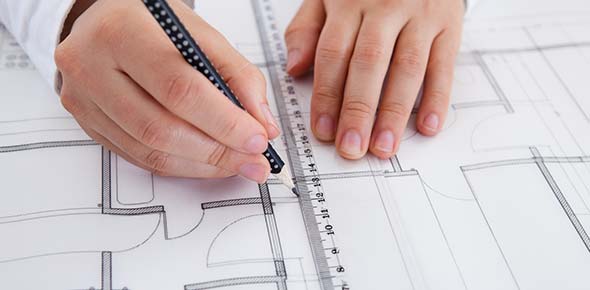A design so proportioned that the maximum stress
...
A
...
WEIGHT OF CONCRETE
What is not included in the computation of reinforced concrete...
A
...
A design in which the steel reinforcement is
...
The stress induced as a result of restrained deformation due to...
1.
...
The property of material that causes it to
...
The
...
It is the middle part of a wide flange
In reinforced concrete beams, which portion is under tension
For a force system to be static equilibrium, the algebraic...
1.
...
A paste of cement, sand and water laid between bricks, blocks, or...
WEIGHT OF STEEL
The twisting of an elastic body about its
...
A slight curve built intentionally into a beam, girder, or truss to...
1.
...
1.
...
The maximum stress that can be attained immediately
...
The vertical or horizontal face in a concrete
...
1.
...
1.
...
1.
...
1.
Intensity of
force per unit area. (NSCP 5.2.1)
1.
...
The act of stretching or state of being pulled
...
WEIGHT OF WATER IS
Members that are generally vertically, subjected to compressive loads,...
1.
...
The weakening or failure of a material at a
...
The
...
The minimum reinforcing steel for spiral columns allowed by...
A tensile or compressive force acting along the
...
1.
...
The
...
1.
...
1.
...
1.
...
1.
...
1.
...
1.
...
What is the
weight of 1 cu. m. of concrete?
The minimum bend diameters for 10mm through 25mm diameter bars
Stress
at which material specimen breaks
Concrete cover of
...
The top of a cantilever beam is in
The minimum
...
A steel rolled section driven into the ground to carry the force from...
What do you call the act/process of enlarging an existing foundation
As the depth of a beam increases, its ability to resist bending?
Where you will see the details for the foundation anchor bolts
What is the best location of support for a one way slab?
The commercial size designation of width and depth, in standard sawn...
In reinforced concrete beams, which portion is under compression
1.
...
1.
...
This wall will be used to protect different levels
The
...
Distance measured from extreme compression fiber to
...
1.
...
1.
...
A
...
1.
...
1.
...
When a beam is in its proportional limit, which among the situation...
In spirally reinforced or tied reinforced compression members, clear...
A beam having both ends restrained against
...
1.
...
1.
...
force
...
1.
...
1.
...
Closely set piles of timber, reinforced or pretressed concrete or...
The maximum spacing of vertical reinforcement
...
The lateral deformation produced in a body by an
...
A brick wall is weak in
Description of an open girder, beam , column, etc, built from members...
1.
...
The general relationships between stress and strain is frequently...
The bottom of a cantilever beam is in
Produce bending moments which vary linearly between loads
1.
...
1.
...
1.
...
The actual stress in a material under a given loading
A simply supported beam , l meters long , carrying a uniformly...
1.
The strength
reduction for shear and torsion is:
When a beam is in its elastic limit, which among the situation below...
The bottom of the footing is in
A number 8 (#8) steel reinforcing bar has a diameter of
1.
...
1.
...
1.
...
The
...
The perpendicular distance a spanning member
...
The modulus elasticity of structural steel is
2 forces equal in magnitude but oppositely directed and produce moment...
The stress developed when the applied load causes adjacent sections...
Maximum stress which the material springs back
...
IT IS A MAXIMUM SAFE STRESS THAT A MATERIAL CAN WIDSTAND
1.
...
It is the effect
...
Structures that are subjected to transverse loads arecalled
The minimum size of fillet weld
Loads that change position within the span of a beam in short amount...
1.
...
The
...
The property of a material that enables it to
...
The property of a material that enables it to
...
The steel ratio for spiral columns ranges from
It is one in which the lateral stiffness is less than 70 %...
1.
...
1.
...
The normal force exerted by a smooth horizontal surface towards a...
For safety purposes for concrete aci code allows designers to use
1.
...
Is a member or an element provided to transfer
...
1.
...
1.
...
These are used to connect shafts
1.
...
1.
...
It is defines as the unit strength of a material
It is a contact pressure developed between 2 bodies
Is the boundary element of a diaphragm or a
...
1.
...
The maximum axial load that can theoretically be applied to a column...
It is an isolated column masonry or a bearing wall not bonded at the...
In ultimate strength design the ultimate reduction factor for bending...
When a beam is in its yield point, which among the situation below...
The ability of a material to regain and rebound
...
Maximum stress below which the material does not
...
According to ACI code, for symmetrical T-beam, the effective width b...
The actual strain by which a concrete fails is
A
...
1.
...
1.
...
The water cement ratio in concrete is
The bottom of the footing is in
It is a web found in the structural member
It is also known as elastic limit
1.
...
The maximum moment of a simply supported beam whose span length is L,...
1.
...
















